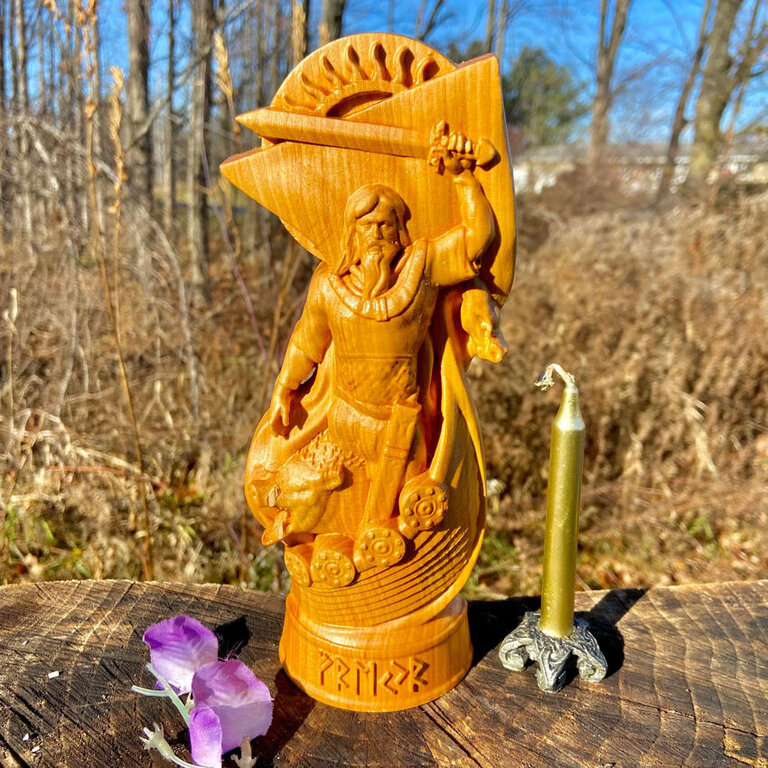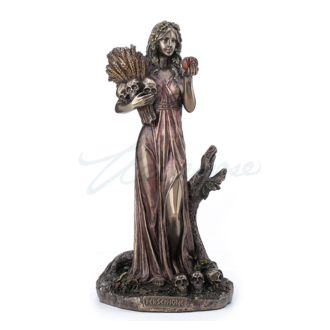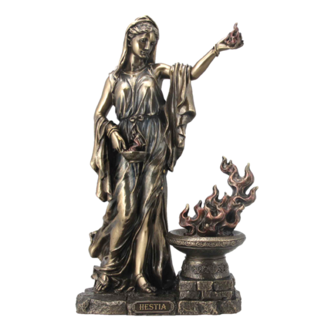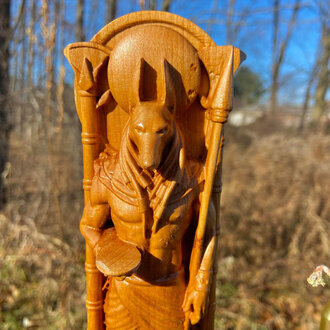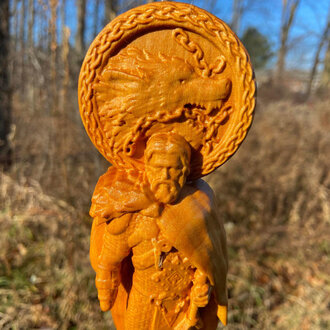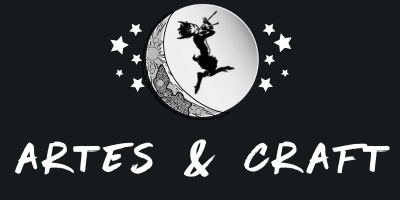
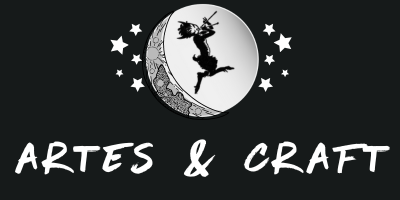

Login
Log in if you have an account
Register
Having an account with us will allow you to check out faster in the future, store multiple addresses, view and track your orders in your account, and more.
Create an accountWe proudly import these from Northern Europe! A small pagan company in Ukraine hand carves these amazing altar statues of the pagan gods and goddesses BY HAND! Most pagan statues on the market are “cold cast resin” – which is fine, but they are basically resin/plastic and mass produced. These are unique, every detail is hand carved! These are tools you will be proud to pass onto the next generation!
Approximately 9 inches high.
Carved from beautiful Alder, one of the famous Celtic Ogham trees. Alder trees feature often in Celtic Mythology and Folklore. They are said to be home to fairies, they are the symbol of Bran in Welsh Mythology and are most often associated with water, secrecy, nature, spirituality, and balance. Alder trees were a source of great mystery to the Celts. Their sap turns a deep red when exposed to the air, as if they could bleed when cut. The bleeding bark and affinity with water led to many negative superstitions about the trees. Alders were considered highly sacred, mysterious and secretive, often thought of as representing nature itself and containing the souls of our ancestors. For this reason Alder is a great choice for a hand carved pagan god or goddess statue for your ritual altar!
Freyr (pronounced “FREY-ur;” Old Norse Freyr, “Lord;” sometimes anglicized as “Frey”) is a god who belongs to the Vanir tribe of deities. He’s also an honorary member of the other tribe of Norse gods, the Aesir, having arrived in their fortress, Asgard, as a hostage at the closing of the Aesir-Vanir War.
Freyr was one of the most widely and passionately venerated divinities amongst the heathen Norse and other Germanic peoples. One Old Norse poem calls him “the foremost of the gods” and “hated by none.” The reasons for this aren’t hard to understand; their well-being and prosperity depended on his benevolence, which particularly manifested itself in sexual and ecological fertility, bountiful harvests, wealth, and peace. His role in providing health and abundance was often symbolized by his fylgja, the boar Gullinborsti (“Golden-Bristled”), and by his enormous, erect phallus.
It shouldn’t be surprising, then, that Freyr was a frequent recipient of sacrifices at various occasions, such as the blessing of a wedding or the celebration of a harvest. During harvest festivals, the sacrifice traditionally took the form of his favored animal, the boar.
His father is Njord, and his mother is Njord’s unnamed sister (presumably Nerthus). Freyr himself has been the lover of numerous goddesses and giantesses, including his own sister, Freya. Apparently incest is a common and acceptable practice among the Vanir (although amongst the historical Germanic peoples it certainly wasn’t).
Freyr’s residence is Alfheim, the homeland of the elves. This could mean that Freyr is the ruler of the elves, but since this is never stated explicitly in the surviving sources, it must remain a fascinating conjecture. The relationship between the gods and the elves is sufficiently ambiguous to allow for a number of possible connections between Freyr and the elves.
Another one of Freyr’s signature possessions is his ship, Skíðblaðnir, which always has a favorable wind and can be folded up and carried in a small bag. Its name, which means “Assembled from Pieces of Thin Wood,” suggests that it served as the mythological archetype of ships that were constructed for particular ritual purposes and were never meant to be seaworthy. We know from archaeological evidence that ships played a major role in the pre-Christian religious rites of the Germanic peoples, which is perfectly in accordance with the major role played by ships in the Bronze and Iron Ages, particularly among the Scandinavians.
